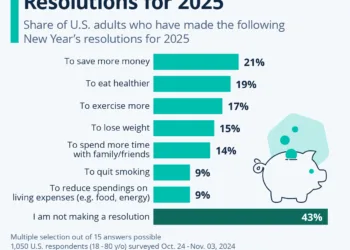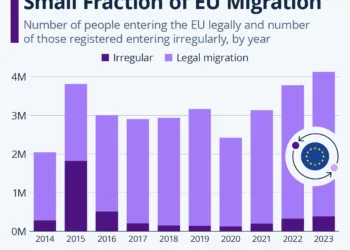The Impact of Inflation on Personal Savings in the U.S.
A Historical Perspective on Personal Savings
The landscape of personal savings in the United States has witnessed significant transformations, particularly in the wake of the COVID-19 pandemic. During the early months of the pandemic, Americans experienced a paradigm shift in their financial behaviors, primarily influenced by government stimulus measures and a sudden halt in consumption opportunities. This unique combination led to a remarkable surge in savings rates.
The Pandemic Savings Boom
In April 2020, the personal saving rate—defined as the ratio of savings to disposable income—soared to an unprecedented 32%. This was a peak performance, a reflection of the financial cushion that many households found themselves in as they navigated uncertainty. Government relief efforts, including stimulus checks and enhanced unemployment benefits, provided necessary financial support while many businesses were shuttered, limiting avenues for spending.
Excess Savings Accumulation
Economists at the San Francisco Federal Reserve made intriguing calculations that revealed the extent of this financial shift. Between March 2020 and August 2021, American households accrued an estimated $2.1 trillion in excess savings. This figure was derived from analyzing savings patterns against a pre-pandemic trend, showcasing just how drastically consumer behavior had altered. This period of accumulated savings was critical, serving as a buffer for many households against the backdrop of a tumultuous economic environment.
The Decline of the Personal Saving Rate
However, the trend did not last indefinitely. By the latter half of 2021, as inflation began to take hold, Americans started to tap into their surplus savings. Rising costs for essential goods and services forced individuals and families to shift gears, drawing down their excess savings to sustain their lifestyles. This marked a significant turning point where savings rates began to reflect a trajectory reminiscent of the pre-pandemic norms.
The Aftermath of Spending
Fast forward to the end of September 2024, the financial picture for American household savings looks starkly different. According to recent data, Americans have collectively depleted an astonishing $291 billion in savings compared to projected levels had the pandemic not occurred. This dramatic decrease speaks volumes about the ongoing economic pressures that consumers are facing.
The Dynamics of Consumer Spending
Consumer spending has remained resilient, playing a pivotal role in bolstering the U.S. economy amidst elevated inflation. Despite the sharp decline in savings rates, consumer expenditure reflects a willingness to prioritize immediate needs over long-term financial security. This inclination underscores a fundamental behavioral shift influenced by inflationary pressures, as households are compelled to adapt to rising costs.
Conclusion
The journey of personal savings in the U.S. is a testament to how episodic events like a pandemic can redefine financial behaviors. As excess savings dissipate and inflation continues to impact the economic landscape, the challenge remains for Americans to navigate an uncertain financial future with diminished safety nets.











